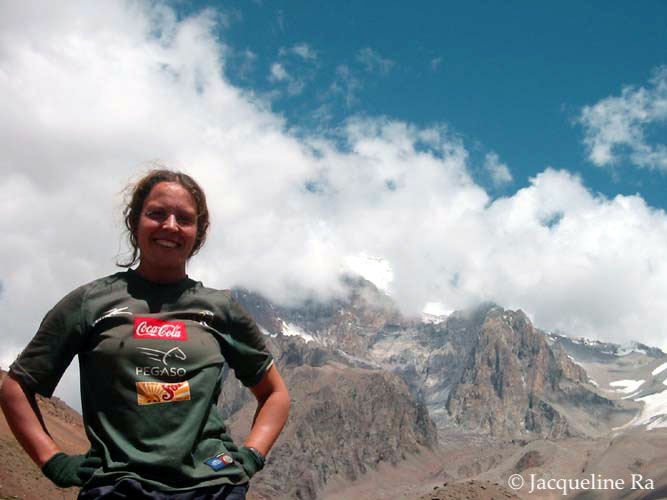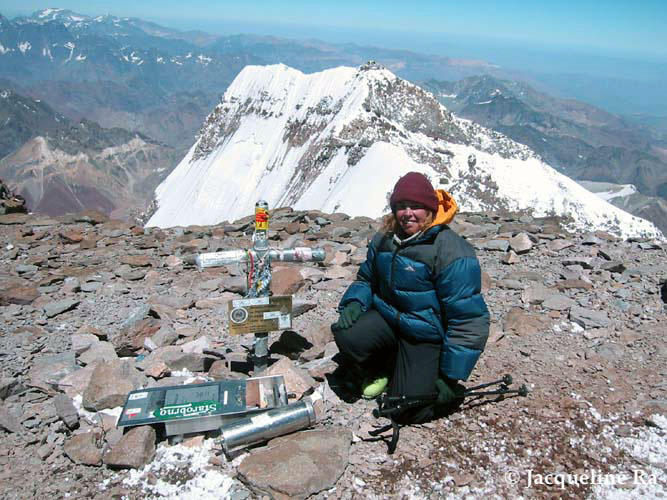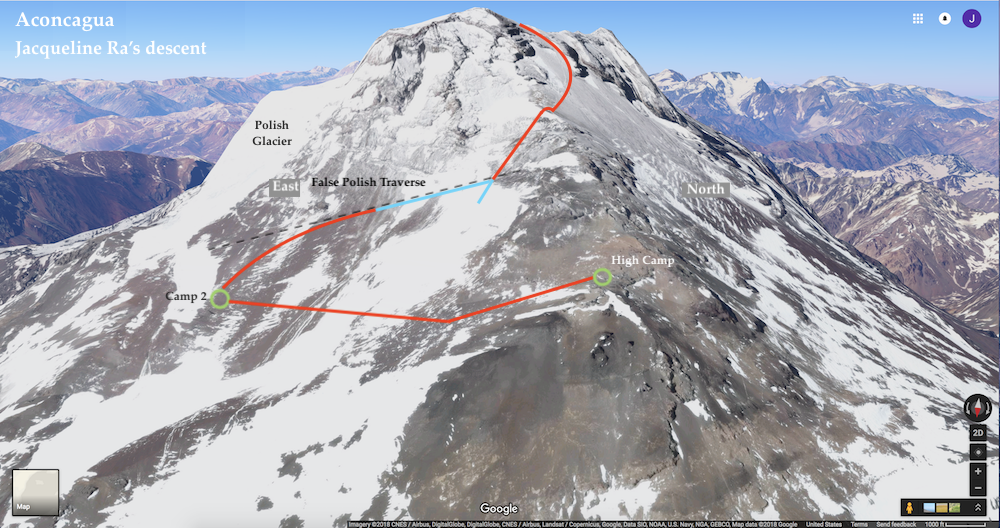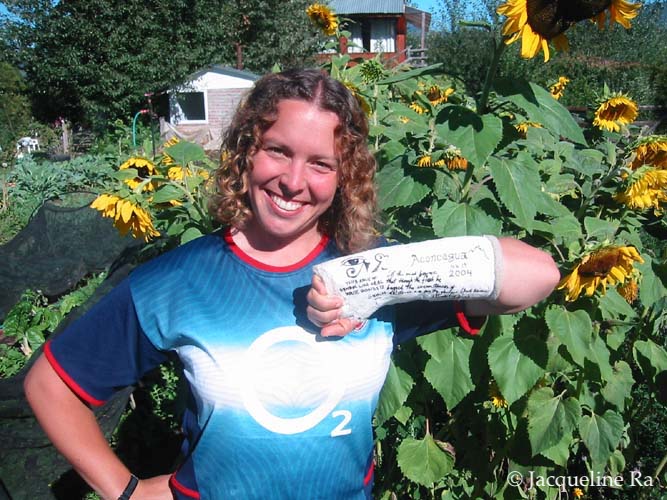Summiting Aconcagua
Read the story
Bigger photo album
On February 19, 2004, I summited Argentina's Aconcagua, at 6962m or 22,841 ft. It took 11 days of altitude headaches, insomnia, and 30 kilos on my back to get there. Four hours later, descending, I got separated from my companions and tumbled about 150 feet down an ice slope, head first and bouncing, with no ice axe. For no apparent reason, I stopped suddenly and only fractured my left hand and incurred nasty bruises.My boot flew off with the impact and my gear was strewn above me. After an hour of yelling for help with no results, I did a slow and tenuous self-rescue. I arrived at a camp just before sunset. The two people there were barely responsive, being mentally hampered by altitude. I traversed back to my campsite in pitch dark without a headlamp or moonlight, mildly hallucinating, and arrived at 10:30pm. The other 10 members of my expedition had gone to bed in spite of their concern. People lose brain function at altitude. In the morning, I helped my guide with his gear and backpacked down to base camp alone, still unable to get others to help me. It took 2 days to hike out to civilization, and 4 days after the accident, I finally reached a hospital for treatment.
I was lucky not to die; during my two weeks on the mountain I witnessed two deaths from a two-thousand foot fall, one death from an edema, one near-fatal cerebral edema, and two lost ice climbers with frostbite.
At the time I wondered if divine intervention stopped my fall. Now I think that's exactly what it was.
On the way up:

On the summit:

The fall:

Recovering:
